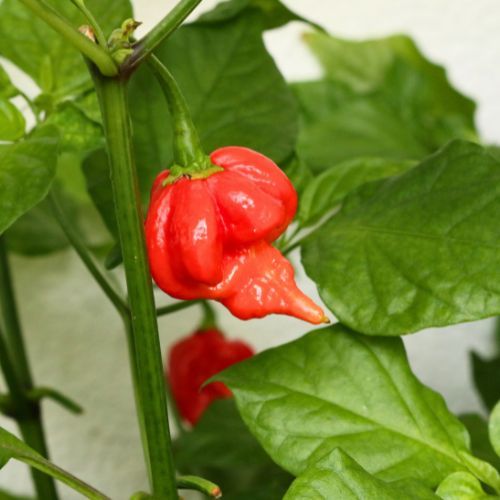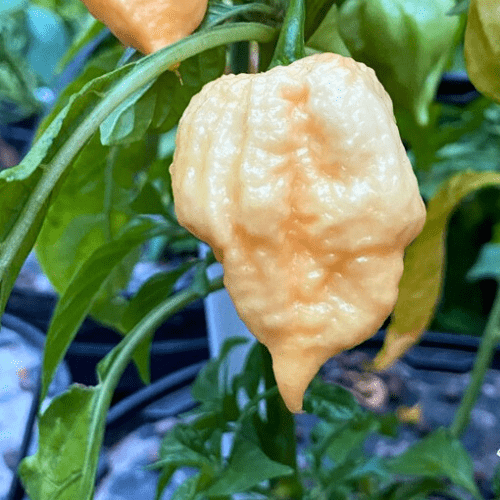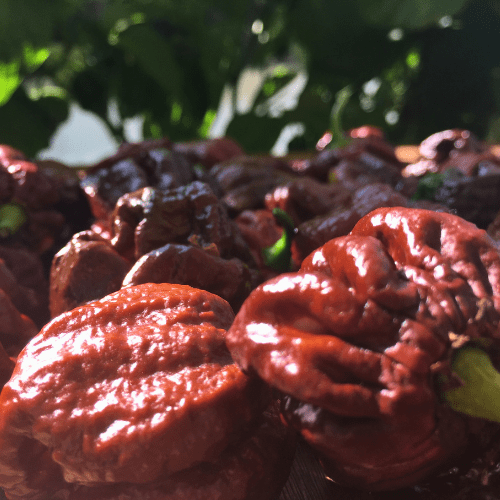Growing Trinidad Scorpion Butch T peppers requires warm temperatures, ample sunlight, and well-drained soil. They are typically grown as annual plants and may require additional care due to their high heat levels and susceptibility to pests.
Position
Like many hot peppers, the Trinidad Scorpion Butch T thrives in warm climates. It requires well-drained soil and plenty of sunlight to produce the best fruit.
Soil
Chili plants prefer slightly acidic to neutral soil pH ranging from 6.0 to 6.8. This range helps ensure that essential nutrients are available to the plants. Sandy loam soils or soils enriched with organic matter drain well and are ideal for chili cultivation.
Clay soils, which are heavy and compacted, should be amended with organic matter to improve drainage and aeration.
Fertilising
Chili plants are heavy feeders, especially when they start producing fruits. They require nutrient-rich soil to support vigorous growth and fruit development. Before planting, amend the soil with compost or well-rotted manure to enrich it with organic matter and essential nutrients.
Thereafter, Apply one teaspoon every 4-5 months of our berry and fruit slow release fertiliser. Press the fertiliser balls gently under the soil and add a loayer of mulch, moving the mulch away from the plant stem.
Mulch:
Apply 2 to 5 centimetres of pine bark mulch to protect the roots from UV damage and drying out. It retains moisture, and maintains an optimal pH. Do not let the mulch touch the plant stem, as it may cause infection or rot.
Water:
Water young chili plants every 2-3 days. Once established, allow the top inch or two of soil to dry out between waterings.
Chili plants do not tolerate waterlogged conditions. Therefore, the soil should be well-drained to prevent root rot and other moisture-related issues.
Wilting during the hottest part of the day can be expected, but if plants are consistently wilting in the morning or evening, they likely need more water.
Containers dry out faster than garden soil, so check container-grown chili plants daily during hot weather. Water thoroughly until water drains from the bottom of the container.
Caution: This pepper requires caution when handling it, especially when preparing it. Direct contact with the skin or eyes can cause irritation or burning sensations.






